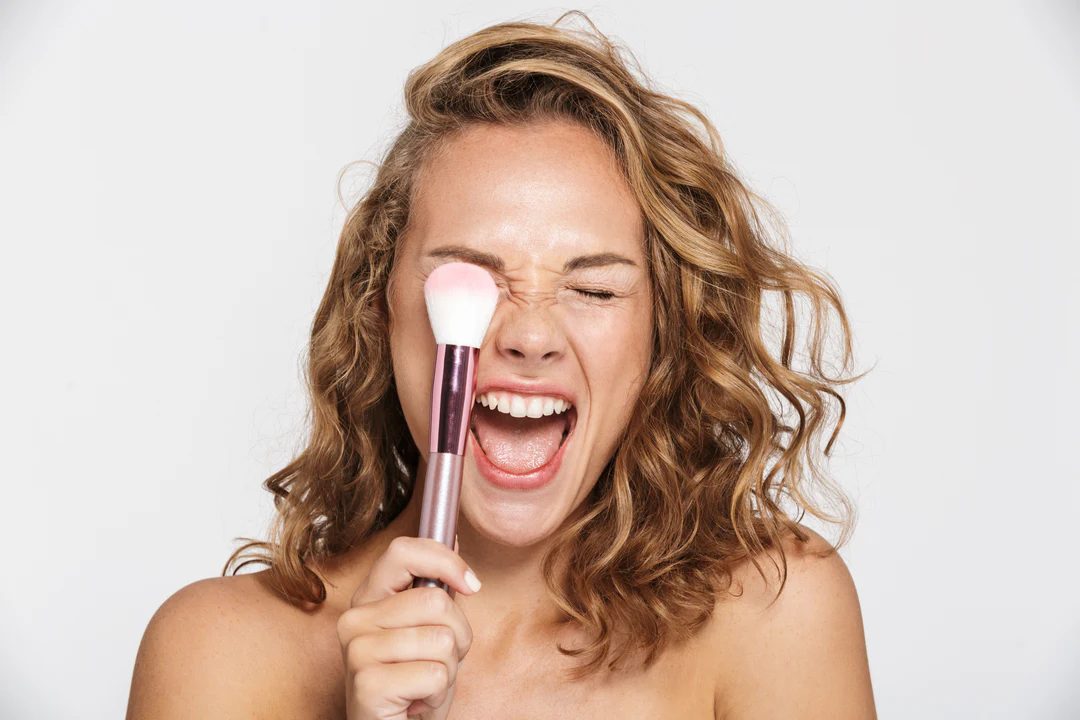What is a makeup fridge? Do you really need one?
In the world of beauty, there are all sorts of products that I literally can’t live without, like mascara or cotton wipes for removing makeup. However, there are some products that I really can’t decide if they’re the answer to all my beauty prayers or just something that thousands of people use to make their Instagram posts cooler… literally. I’m talking about a makeup fridge. Yes, you heard me right, a small desktop fridge that’s designed to store beauty products.
Many of you may have rolled your eyes when you read that last part, perhaps with an accompanying “boo”. Crap, who on earth needs a mini fridge for skincare? On the other hand, some of you may be amazed at the sheer genius of this idea because you’re a true beauty lover. There’s nothing to be ashamed of, and there’s certainly no judgement here, I’m probably the worst addict out there!
These little (for some) wishlist items vary in price, ranging from £30 to over £100. You need to think about whether you’re still in bliss when you sit down in front of your dressing table in the morning and admire it lovingly every day. Or will you look at him with disgust after a while, just like how you felt when you saw a particular ex wasting too much of your time. That’s an answer only you can decide, I can’t be the little devil on your shoulder…
The question is, do you really need one of these fridges? The sensible adult in me says, “No, if you must, stay in the designated area of a regular fridge.” The true, shameless beauty fan in me screams, “Uh, sure!” Spending your paycheck on a nice pastel-hued table fridge, I thought I’d show you the products in your skincare routine that would rather cool down! If you’re wondering what to keep in your makeup fridge, keep reading.
Day Cream
Day cream isn’t a product that has to be in the fridge. However, some beauty pioneers say that using an iced daily moisturizer works wonders for tired, puffy faces. The cooling effect makes your skin feel tighter and softer, and minimizes the appearance of large pores.
Nail Polish
Yes, believe it or not, nail polish is a big fan of cooling down. The polish is formulated to maintain just the right consistency and won’t separate or become sticky due to too much heat.
Facial Sprays
The 2019 heatwave is now well and truly over, but the advice I’ve seen everywhere is to use a facial spray or keep one in the fridge for an extra hydrating effect. It’s just what you need to avoid a complete meltdown! This tip might be a bit useless now, but it’d be great to try if there’s a heatwave next year, or even on holiday.
Face Masks
As I’ve been known to say, I have a dedicated shelf in my fridge that I keep for face masks. There’s nothing better than applying a chilled face mask (especially when a Saturday night ‘one drink’ turns into a 3am taxi ride with a box of cheese slices). Similar to day creams, cold masks reduce swelling and also have a very calming effect on the skin. Our Instaclear Control Mask, once chilled, is the ultimate treat for your face! Don’t forget it also doubles as an eye mask for tired eyes!
Organic Skincare
Organic products and those that contain probiotics and are preservative-free are best stored in the fridge as they don’t have a particularly long shelf life. Since some products are considered ‘fresh’, refrigeration is essential for the product and its shelf life. Another way to look at it is: products with probiotics and active ingredients are the same as milk or yogurt, because let’s face it: nothing good can come of taking milk out of the fridge…
Believe it or not, despite these fridges being called makeup fridges, several professional makeup artists have pointed out that storing your makeup in these fridges will ruin it! Your lipstick will lose moisture and your foundation will become less soft.
In an age where tidying up is the latest, freeing habit and we are all busy tidying up every corner of our homes and finding a place for everything, even paper clips, it’s no wonder our dressers are going through a Marie Kondo moment and it just so happens that these trendy fridges inspire the “joy” we are all desperately seeking.
Could the tidying up craze be the reason for these fridges’ popularity? Or maybe our skincare routines are taking a cleaner route and the products we use right now need help.
I guess I’m trying to figure out in a rather lengthy way whether these makeup fridges are a bit of a gimmick or not. Probably…any sensible person would put their skincare products in the main fridge when needed. I admire that and plan to be like you when I grow up. However, for now I’m hoping to have my own makeup fridge one day.
DQH Knowledge drop: In your 20s, your skin cell turnover decreases. (Cell turnover is a key component in keeping your skin youthful.) You know what else slows down? Your collagen production. Starting in your 20s, collagen decreases by about 1 percent per year. Should you want to prevent fine lines and wrinkles, start by eliminating behaviors that contribute to premature aging. “If it’s bad for you, it’s bad for your skin,” says dermatologist Michel Somenek.
“Cigarette smoking reduces blood flow to the skin and causes premature wrinkling and a dull skin texture. Making the repeated pursed motion to inhale can also cause smoker’s lines. Alcohol and recreational drugs are toxins for the skin that damage its cellular structure and DNA,” Somenek tells us. “The faster you eliminate vices while you are young, the better chance your skin and body have to recuperate.” Also, adopting an anti-aging routine in your 20s is key. After all, the best offense is a good defense. We spoke to Somenek and experts Joshua Ross and Audrey Kunin to find out more.
Keep reading for the best anti-aging products for your 20s, according to skincare professionals.
Sunscreen
“We all know that the sun is the number one cause of skin aging and starting the prevention in your 20s is very important,” Ross says. “The majority of your sun damage won’t start to appear until you’re in your 30s, so don’t wait until you see it surface or you’ll be behind the curve. Stay ahead of it with a good-quality zinc-based sunscreen worn daily.”
Farmacy Green Defense Daily Mineral Sunscreen
An invisible sunscreen with SPF 30, plus botanical extracts meant to protect skin with tons of antioxidants. Bonus: It’s clean and fine to use under makeup.
Bareminerals Complexion Rescue™ Tinted Moisturizer Broad Spectrum SPF 30
Although we recommend you use your SPF and moisturizer separately, we also understand moments when you don’t have time or energy for that extra step. For those times, this bareMinerals moisturizer is a great thing to have on hand.
Vitamin C Serum
“A great introduction to anti-aging is to start with a vitamin C serum in your morning skincare routine,” Ross says. “It’s a powerful antioxidant that will neutralize free radicals and brighten the skin.” He adds that it’s a great way to counteract the effects of the sun’s harmful rays, which, as previously mentioned, are among the biggest causes of premature aging.
Drunk Elephant C-Firma™ Vitamin C Day Serum
The Drunk Elephant C-Firma is a lightweight serum that promises to give skin a glow by combining the brightening powers of vitamin C with ferulic acid, l-ascorbic acid, and vitamin E. The included sodium hyaluronate is meant to replace hydration loss, so you shouldn’t have to deal with any irritation.
Sunday Riley C.E.O. Rapid Flash Brightening Serum
This potent serum is jam-packed with vitamin C (15 percent, to be exact), which means it’s a potential superstar at both brightening skin and dousing it in antioxidants.
Peptides
Using peptides on your skin has many benefits, says Somenek. “The skin barrier is what defends the body against pollution, UV rays, bacteria, and toxins. It can be damaged by several everyday factors. Using topical peptides aids in building a stronger barrier,” he says. “Peptides comprise elastic fibers, which are a type of protein. These fibers help to make skin appear taut and firm. Peptides can also help repair damaged skin, relieve inflammation, and even out skin tone. Some peptides can kill acne-causing bacteria that is common in 20-somethings.”
Kunin agrees, saying, “Peptides are an excellent entry point for supporting collagen.” She recommends looking for face and eye treatments that contain these collagen-boosting powerhouses.
Charlotte Tilbury Magic Eye Rescue Cream
This Charlotte Tilbury super-emollient eye cream has a base of coconut oil and shea butter (read: it’s incredibly hydrating). Botanicals plus peptides are meant to help reduce dark circles and boost collagen, respectively.
This creamy moisturizer serves up potent collagen-boosting peptides and pycnogenol, and antioxidant-rich vitamin C. “Instead of sitting on top of the skin, peptides penetrate the outer layer so they go deep. The ‘signals’ they send tell the cells to produce elastin and collagen, which are needed for youthful-looking skin,” explains Somenek.
At-Home Peel Pads
Remember that skin cell turnover fiasco we talked about earlier? One way to help support it is by exfoliating. “Exfoliation is important to help keep skin fresh and luminous,” Kunin says. She recommends using at-home peel pads as an easy and effective way to exfoliate.
“The goal in your 20s is to fight the slowing pace of cell turnover. It is wise to use products that gently exfoliate, yet still remove oil and other impurities. Products that have Alpha Hydroxy Acids (AHA) or Beta Hydroxy Acids (BHA) are a good choice.”
According to Somenek, you should only exfoliate two to three times a week. “People of all ages are guilty of over-exfoliating and that can be too much of a good thing,” he says.
Dermadoctor Kakadu C Intensive Vitamin C Peel Pad
A few swipes of this Derma Doctor powerful peel pad promise to leave your skin glowing and smooth, thanks to the seven (yes, seven) types of chemical exfoliants, including AHA and BHA. It also contains vitamin C via Kakadu plum extract for added brightening and antioxidant protection.
KEY INGREDIENTS Kakadu plum extract is sourced from the Kakadu plum, a fruit grown in northern Australia. It contains vitamin C, which restores the skin’s natural barrier, increases collagen production, and soothes irritation.
Dr. Dennis Gross Skincare Alpha Beta® Universal Daily Peel Pads
These are the gold standard of peel pads, with a cult following and over 900 five-star reviews on Sephora. They’re easy to use and contain a blend of anti-aging exfoliating acids.
Emollient Night Cream
“In your 20s, you need to start upping the hydration in your skincare routine. You may have been cautious of over-moisturizing because of acne in your teens, but as you enter your 20s, your skin transitions and becomes drier,” Ross says. “I recommend an emollient night cream added into your evening skincare regimen.”
“Twenty-somethings need to make sure that they are not using creams that will clog their pores and cause excess oil production,” says Somenek. Opt for non-comedogenic products.
Cerave Skin Renewing Night Cream
One great choice is the CeraVe Skin Renewing Night Cream, which is a non-comedogenic night cream that leaves skin soft and glowy. It combines the moisturizing powers of ceramides and hyaluronic acid.
RoC Retinol Correxion Max Hydration Creme
“The best night cream ingredients contain retinol, benzoyl peroxide, and/or salicylic acid or hyaluronic acid. The goal is to moisturize, yet remove excess oil,” says Somenek. This Roc Retinol Correxion cream fits the bill as it contains both hyaluronic acid and retinol so it promises to moisturize while also being non-comedogenic.



